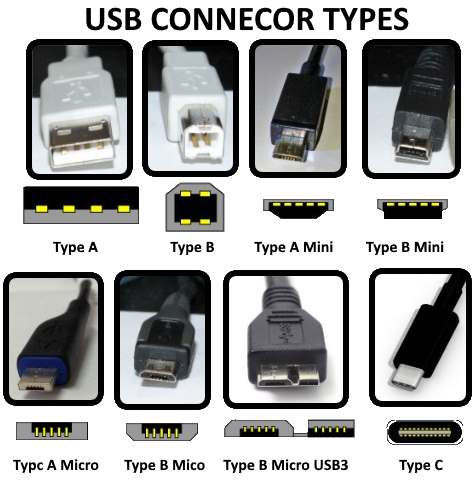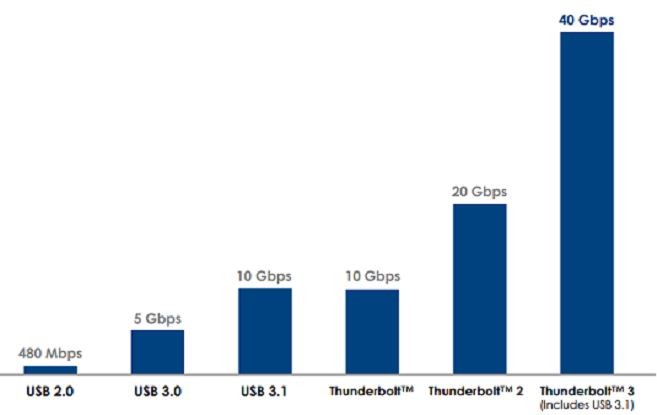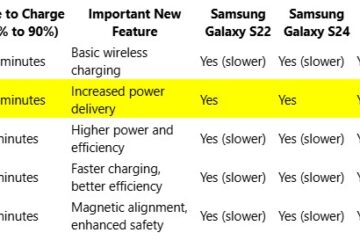As we explained in our short piece on USB Type C / Thunderbolt speeds, the type of USB connector does NOT define the speed in use. USB (Universal Serial Bus) is very versatile and can operate at speeds from 480 Mb/s all the way to 40Gb/s. The purpose of this page is to simple identify the connectors and show the speeds that are possible.
Below we show USB Type A, B and C with all of their common variants:
As you can see in this picture, it is possible that even the latest USB Type C connectors can operate as speeds as low as USB 2.0 which is just 480Mb/s:
Here you can see that even relying on the Intel standard named Thunderbolt will not save you from having to know the speeds, because there are three different versions of Thunderbolt:
Beyond the different types of USB connectors, and the speeds each can operate it, is the option for electrical power:
| Type | Year Released | Number of Loads | Power Per Load | Max Power |
| USB 1 | 1998 | 1 | 100 mA | 100 mA |
| USB 2 | 2000 | 5 | 100 mA | 500 mA |
| USB 3 & 3.1 Gen1 | 2008 | 6 | 150 mA | 900 mA |
| USB 3.1 Gen 2 | 2013 | 6 | varies | 1.8A |
| Thunderbolt | 2013 | 6 | varies | 1.8A |
Both USB 3.1 Gen 2 and Thunderbolt can also provide 100 watts of power INBOUND to your device (laptop, tablet, cell…) so you can readily charge most devices with a single modern USB connection. Many companies including Dell have largely dropped proprietary connected docks from their product lines because they can now sell a dock that connects to your laptop using has a single USB Type C Thunderbolt connector that will charge your laptop while still outputting as much as 3 HD screens, 6 USB Type A ports (old school). For OEM’s like Dell, this simplifies design, production and for you that saves you money and time.
If you are trying to figure out why your USB is failing, you may have a faulty cable, port or hub or you could have power management misconfigured. You can goof around with swapping parts or you can use software like MiniTool to figure out why your USB keeps disconnecting and reconnecting.
Because you are most likely interested in what the most current product, Thunderbolt version 3, can do for you we thought you would find this short video helpful:
For more details we recommend the following sites:
- ThunderboltTechnology.net/tech/faq
- TrustedReviews.com/opinion/usb-type-c-everything-you-need-to-know-2932202
- CNet.com/how-to/usb-type-c-thunderbolt-3-one-cable-to-connect-them-all
- Dell.com/support/article/ca/en/cadhs1/sln300756/frequently-asked-questions-faqs-about-the-thunderbolt-port-on-a-dell-pc?lang=en
.





3 Comments
Jared Almario · June 11, 2021 at 7:54 pm
Great article
Ian Matthews · June 17, 2021 at 2:54 pm
Thanks Jared. USB is crazy confusing.
George · March 6, 2018 at 5:29 am
Thunderbolt really is the future then. Too bad that it’s also not backwards compatible as older Laptops like mine don’t have a Type C port at all.